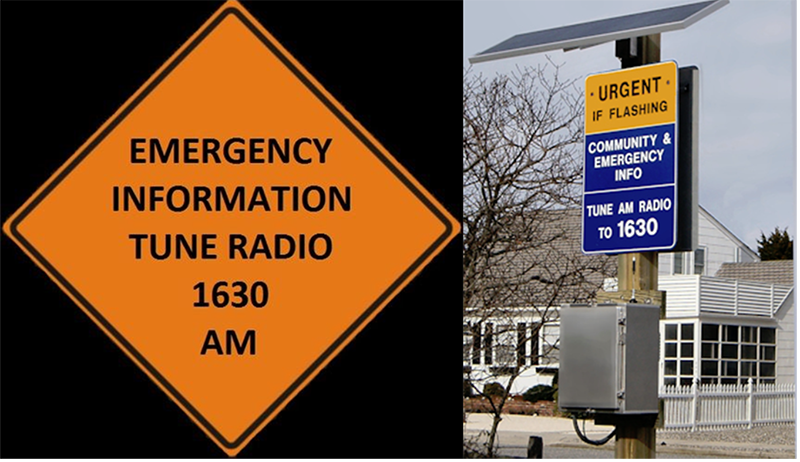Design engineers are caught between a push to drop AM radios from cars and the radio industry’s pushback.
It hasn’t received much attention among all the other news (mostly bad, some good), but there’s some momentum in the U.S. Congress to mandate the inclusion of AM radio receivers in cars. Among all the other issues with which Congress is grappling (make your own list here), this may seem like a fairly small issue, but it is not to the key players and has major costs, consequences, and implications.
Who are the players? On one side, it’s the AM radio broadcasters who fear that they will lose a significant fraction of their audience if AM in cars disappears – apparently, that’s a major listening venue for their audience. On the other side, vehicle makers are challenged by the cost and design effort to make AM radio receiver performance acceptable in today’s EMI/RFI-spewing cars, especially electric and hybrid electric vehicles (EV/HEV).
Tesla, Volvo, and BMW are among the companies that have already stopped providing AM receiver functionality in some models; last year, Ford said it would join them but reconsidered and reversed that decision after it got political heat from lawmakers.
There are many interesting, viable, and legitimate arguments made by each side. The arguments for retaining and mandating AM are that it has wide, low-cost reach and is a valuable resource in case of emergencies such as natural disasters. it doesn’t take a lot of infrastructure to maintain links between broadcasts and the listeners. As long as the transmitter is powered up, you can reach and add listeners very easily, and there’s no limit to their number. There’s also the historic, almost nostalgic case that AM radio was the first electronic mass-media technology, so how can we toss it overboard?
Further, even with the widespread availability of the Internet and deployment of cell towers, there are apparently niche audiences for whom “radio” (both AM and FM) are still vital community resources. The National Association of Broadcasters (NAB) has all sorts of self-serving surveys and statistics assuring us that AM radio is still listened to. However, if you dig deeper, you find that many of their “listen to” statistics are really “sort-of heard” passively as background audio and many so-called listeners are not really paying attention.
Still, there’s no denying that in times of crisis when much connectivity may be unavailable, broadcast radio is a very viable way to reach a huge and dispersed audience with emergency information; there’s even a nationwide formal arrangement for doing so. Some communities have basic AM radio “reminder” signs about the 1630-kHz emergency frequencies, and you can also get more sophisticated ones with flashing lights, remote activation, solar-power backup, and more (Figure 1).

On the “we don’t need AM” side, automakers claim that adding AM radio adds cost and is irrelevant, as today’s cars have so much connectivity through cell phones, satellite links, Wi-Fi, and more. They also point out that old-fashioned broadcast radio has a much smaller role in the car in today’s world. The fraction of the audience who listens in non-car situations has dropped off a cliff and into a chasm; many hones no longer even have an AM radio, and if they do, they are not sure where it is, if it still works, or how to use it.
The impact on engineers
While proponents on both sides make many strong points, it’s ultimately a political, business, and social discussion, because the engineering aspects are well-defined. The “problem” with AM radios in cars primarily comes down to EMI challenges, the need for more components, and the additional of serious design-in burdens.
Ironically, it’s not providing a radio function itself that’s the issue. Times have changed since the first car radios appeared in the late 1920s (Motorola was the key driver). From that time until about 20 years ago, the car radio was a distinctive, separate unit in the dashboard console (and was a popular item to upgrade or steal in the 1960s and 1970s) (Figure 2).

Now, providing the AM receiver core requires just a slightly more sophisticated receiver IC than an FM-only receiver. The concept of a distinct car radio is obsolete, as the radio is an integrated part of the console and its infotainment subsystem.
However, it’s the system-level implications and add-on “baggage” that hurt. It begins with the need for another antenna or sub-antenna for the 550-1600 kHz AM band, which is widely separated from the other bands used in the car. In addition to the internal filters of the AM function, some more external filtering may be needed to split AM from the other signals.
The real challenge is the noise picked up by the AM signal due to the car’s generation of EMI/RFI. Like almost everything these days, cars must meet complex, multiple, and stringent EMI limits. However, even these limits are not tight enough for the AM receiver, which by its nature is very susceptible to additive noise. Therefore, adding AM radio means yet even more filtering at various places in the car, to squelch some offending noise closer to its source before it can reach the receiver function.
Nor can AM radio be made an option, as it was in the old days. The cost is not the AM radio functionality itself, but all the other items needed to successfully integrate it into the car’s overall structure, design, and build at the system level.
For example, keeping the radiated and conducted RF noise to an acceptable level may also require extra shielding, which clearly adds cost, complicates assembly, and even affects how cables are routed. Given the difficulties car designers already encounter as they try to fit so much into the vehicle’s confined enclosure, adding yet another piece to the puzzle can be nearly impossible. It can also impact assembly issues, a topic that is easy to ignore if you are only looking at design and BOM implications.
The end game
What to do? I’m torn between “keep it” or “who cares? Extremes. I recognize the major role that AM radio has played in the development of electronic components and technology, as well as the public safety role that AM can play. I also recognize that technologies can become far less important, if not altogether obsolete.
But I also wonder if prudent and conscientious engineering also says that EEs should ensure that their final designs and installations should be almost noise free, rather than redefining the project objectives. Yet, at the same time, I recognize that every additional mandate adds to the design burden, and their sum can reach beyond the point of what can be done within the many constraints and hard limits. It’s one thing to legislate a technical feature; it’s another thing to actually have to implement it.
How will this battle of AM in cars end? I have no idea. There are many powerful lobbying forces involved on all sides here: the broadcasters, who have both national and highly local connections, and the auto manufacturers with their local dealers with their many levels of influence, to cite just two. Looks like designers are once again caught in the middle, whichever way it goes.
Related EE World content
Radio receiver architectures, Part 1—TRF and Superhet
RF-to-Bits tuner chips simplify vehicle head unit designs
Automotive noise suppression filters work in MF and HF bands
A comparison of EMI test setups and specifications for automotive, industrial and defense applications, part 1: conducted emissions
A comparison of EMI test setups and specifications for automotive, industrial and defense applications, part 2: Radiated emissions
External references
The Wall Street Journal, “Car Industry Seeks to Crush AM Radio; Congress May Rescue It”
Cumulus Media, “New Studies Reveal Power of AM/FM Radio in Cars”
InCompliance, “ESD Designers’ Headache with Multiple Automotive Test Requirements, Part 1”
InCompliance, “ESD Designers’ Headache with Multiple Automotive Test Requirements, Part 2”
In Compliance, “Meeting Automotive EMC/EMI Requirements”
(video) Motorola Museum of Electronics, “Brief History of MOTOROLA 1930 – 1997”







What has been very deliberately kept out of the discussion about that massive distraction causing entertainment system is safety. That huge distraction screen to keep the driver entertained instead of focused on the task of driving. And certainly all of the added toy functions do distract drivers.
The sole motivation is added profit with very little expense. The infotainment package is probably the very highest profit to cost part of the whole vehicle, so the needed legislation to remove the distraction features will be fought intensely.
Well I own a 2 year old MG ZS EV here in New Zealand that is 96% solar powered from my 5 kw roof. I have NEVER noticed the slightest problem with AM radio reception in the vehicle. NZ is a hilly country and FM reception is often not the best at more than say 40 km from a station. Where I live, about 40 km from Auckland, the pilot tone at 19 kHz keeps dropping out on stereo FM making listening rather annoying as the signal switches between stereo and mono. AM radio reception (usually on 756 kHz is perfectly OK.
Perhaps the engineers at Tesla et al, better go and have a look around Shanghai?